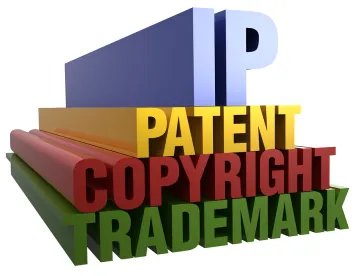We have previously written about the scope of patents eligible for CBM review, including the PTAB’s inconsistent approaches in determining whether patents qualify for CBM review and the Federal circuit’s narrowing of the eligibility standard employed by the PTAB.[1] On June 6, 2017, a divided Federal Circuit issued an order in Secure Axcess denying petitions for rehearing en banc.[2] By declining en banc rehearing, the Federal Circuit may have placed a stamp of finality on the scope of CBM review.
In Part 1 (herein), we discuss the Federal Circuit’s decisions narrowing the scope of CBM eligibility, eliminating from CBM review patents claiming activities that are only incidental to or complementary to financial activity, and its most recent order denying en banc rehearing in Secure Axcess – which was accompanied by multiple concurring and dissenting opinions. In Part 2, we will discuss recent PTAB decisions showing how the Board has adjusted its approach in evaluating whether a patent is eligible for CBM review in view of the Federal Circuit’s guidance, along with considerations for parties and practitioners going forward.
Background:
The American Invents Act provides a number of procedures for challenging the validity of issued patents before the Patent Trial and Appeal Board, including a transitional program for post-grant review of covered business method (“CBM”) patents. CBM review is a quick and cost-effective way to adjudicate the validity of business method patents, and like other procedures established by the AIA, such as inter partes reviews, CBM review rapidly gained popularity among accused infringers.
Unlike the other procedures, the question of which patents qualify for CBM review has persisted in the years following the AIA’s enactment. In determining whether to institute a patent trial, the PTAB normally decides, as a threshold matter, whether the challenged patent qualifies as a covered business method, i.e., whether the patent claims a method, or corresponding apparatus, that is used in the practice, administration, or management of a financial product or service. Despite finding a range of business methods and software patents eligible for CBM review during the program’s early existence, the PTAB subsequently took conflicting approaches to assessing eligibility. This inconsistency was largely due to the difficult assessment of whether the challenged patent was sufficiently “incidental” or “complementary” to a financial activity to qualify, and how the Board made that determination.[3]
What qualifies as a “covered business method patent” is seemingly straightforward under the statutory definition: “a patent that claims a method or corresponding apparatus for performing data processing or other operations used in the practice, administration, or management of a financial product or service.”[4] This definition does not, however, provide much guidance as to what makes a method sufficiently related to “the practice, administration, or management” of a financial activity.[5] Nonetheless, the USPTO adopted this definition into its rules without making any changes.[6]
To fill this gap, the PTAB formulated its own inquiry: “whether the patent claims activities that are financial in nature, incidental to a financial activity, or complementary to a financial activity.”[7]The Board’s standard was derived from the legislative history of the AIA, which explains that the definition of covered business method patent was intended to be broadly interpreted to encompass patents ‘claiming activities that are financial in nature, incidental to a financial activity or complementary to a financial activity.’” [8] Under this broad standard, the Board found a number of patents, directed to seemingly non-financial activities, to be covered business method patents because they were incidental or complementary to a financial activity, a finding that was often based on the specification or other evidence if not clear from the plain language of the claims. For example, the Board ruled a patent claiming automated substitute employee fulfillment eligible for CBM review because the specification discussed substitute employee fulfillment for retail banks, and a claim – not among those challenged in the petition – explicitly recited retail banks.[9] In other cases, the Board has applied a similarly broad reading of CBM qualification, finding a patent that claims governing the transfer of rights to digital works were incidental or complementary to a financial activity, especially when viewed with the specification’s description of charging a fee to effect the transfer;[10] claims directed generally to the management of personal information recited a covered business method due to the specification’s description of using the invention to manage personal finances, noting that “a literal recitation of the terms data processing or financial or similar terms” was not necessary;[11] and claims directed to data authentication that did not recite any financial terminology were ruled incidental to a financial activity based on the description of a need by financial institutions to ensure authenticity and use of the claimed method by financial institutions.[12] In the latter case, the PTAB also found the fact that the challenged patent had been asserted against approximately 50 financial institutions as weighing in favor of institution.[13]
Initial reviews of CBM decisions by the Federal Circuit did not restrict the Board’s expansive reading of the CBM statute. In Versata, its first review of a CBM case, the Federal Circuit interpreted the CBM statutory definition to include patents directed to a “wide range” of “finance-related activities,” while flatly rejecting any limit to patents only in the financial industry.[14] The Federal Circuit reaffirmed this holding in Blue Calypso, rejecting arguments that CBM review was limited to patents covering financial activities traditionally arising in the financial sector.[15]
From the PTAB’s perspective, once the USPTO declined to provide a more specific definition of a covered business method, the Board was largely left to interpret AIA Section 18(d)(1) on its own. And the Federal Circuit itself had endorsed the “financial in nature” portion of the Board’s definition in Blue Calypso, the previously seminal case on the scope of CBM review.[16]
Federal Circuit Decisions Clarifying Covered Business Method Patents:
Apparently concerned about the scope of patents that might be captured by the Board’s broad CBM definition, the Federal Circuit’s decisions in Unwired Planet and Secure Axcess narrowed the CBM standard and overruled the PTAB’s “incidental to” or “complementary to” prongs of the standard, as briefly summarized below.[17]
Unwired Planet v. Google.[18] The Federal Circuit overturned the PTAB’s institution of CBM review of U.S. Patent No. 7,203,752, which relates to restricting access by client applications to a wireless device’s location information based on the user’s privacy preferences. The Board found that the ’752 patent’s disclosure of a client application that associated with the provider of a good or service was sufficiently incidental or complementary to the financial activity of product or service sales. But the Federal Circuit ruled that patents that merely claimed activities “incidental or complementary to” a financial activity do not qualify for CBM review.[19] Recently, the Federal Circuit denied the petitioner’s request to rehear this decision, finalizing this precedent.[20]
Secure Axcess v. PNC Bank.[21] Shortly after its Unwired Planet decision, the Federal Circuit again overturned the PTAB’s decision to institute a CBM review, this time in a case involving. U.S. Patent No. 7,631,191, which relates to authenticating web pages. In finding the ’191 patent CBM-eligible, the PTAB explained that the specification discloses a need by financial institutions to ensure customers of its web site’s authenticity and describes use of alternative embodiments by financial institutions. The PTAB also relied on the fact that the patent owner asserted the patent against approximately fifty financial institutions as further support for its conclusion that the patent claims a method incidental to financial activity.[22] As in Unwired Planet, the court in Secure Axcess rejected the Board’s use of “incidental to” or “complementary to” as part of defining a CBM patent because these terms are not part of the statutory definition. But the court went further, holding that the statutory definition requires a CBM patent to have a claim that includes a financial activity element.[23] The court also rejected the Board’s reliance on who has been sued for infringement of the patent, explaining that choices by the patent owner to sue certain parties, and not others, does not identify a CBM patent or even “illuminate” an understanding of the claimed invention.[24]
Several parties requested rehearing en banc of the Secure Axcess decision. By a vote of 6-5, a clearly divided Federal Circuit denied the petitions for en banc rehearing, the order accompanied by several opinions concurring in or dissenting from the denial.[25] According to Judge Taranto’s concurring opinion, the statute requires that the claims must recite a financial element to qualify for CBM review, otherwise the CBM scope would be expansive and we may be left with determining what usage was, in fact, made of the patented technology.[26] Judge Lourie authored an opinion in dissent, arguing that the panel decision severely limited what qualifies as a CBM patent, contrary to the intent of Congress in establishing CBM review. According to Judge Lourie, Congress intended the CBM program to apply broadly to correct errors in issuing business method patents, but under the narrowed standard the Board was precluded from reviewing patents clearly described in the specification as covering financial products – and pointing out that the subject ’191 patent only describes application of the invention to financial services.[27] Judge Dyk, who joined Judge Lourie’s dissent, also issued a separate dissenting opinion because, in his view, determinations by the PTAB as to whether a patent is CBM-eligible should not be subject to appeal before the Federal Circuit.[28]
Standard For CBM Eligibility Has Been Substantially Narrowed:
In issuing the Unwired Planet and Secure Axcess rulings, the Federal Circuit has now clarified the standard for CBM review. These rulings have substantially narrowed the scope of CBM eligibility in two ways. First, the court has eliminated reliance on the “incidental to” or “complementary to” prongs of the Board’s broadly-stated standard. Under the statute, CBM patents are limited to those with claims that are directed to methods and apparatuses of particular types and with particular uses “in the practice, administration, or management of a financial product or service”.[29] This definition – which ostensibly includes the “financial in nature” prong previously endorsed by the court in Blue Calypso – is considerably narrower than the Board’s additional, and expansive, “incidental to” or “complementary to” phrasing. Of paramount concern to the court was the breadth of the “incidental to” or “complementary to” language, which might capture such (hypothetical) patents as a light bulb that works well in a bank vault, or a ditch digger used to extract dirt that is sold. Indeed, the court indicated that sales activity should not be a determinative factor, even if the specification suggests a potential sale, since all patents may relate at some level to potential sale of a good or service.
Second, as a result of Secure Axcess the court has imposed a requirement that a CBM patent must have a claim with a “financial activity element.” This would arguably eliminate from CBM review patents clearly describing, in the specification, the invention in terms of financial products or services where the claims are written more broadly, perhaps in general terms, to encompass other products or services – even where the only embodiment(s), or the only commercially valuable embodiment(s), is/are described in terms of a financial product or service. Claim construction may, thus, become even more critical in determining CBM eligibility, since the issue will turn on whether the claims include a “financial activity element.”
Additionally, the search for a financial activity element in the claims may also increase the use of statutory disclaimer by patent owners. In what has become a controversial practice, some patent owners have sought to avoid CBM review by entering statutory disclaimer of claims containing specifically-recited financial terms. Both Judge Taranto and Judge Lourie commented on this practice in their respective opinions accompanying the en banc denial order in Secure Axcess, with differing degrees of concern,[30] perhaps signaling, through diverging views, that the court may eventually be called upon to directly address the impact of disclaimed claims on CBM eligibility.
Finally, in overturning the Board decisions in Unwired Planet and then Secure Axcess, the Federal Circuit criticized the PTAB’s reliance not only on the legislative history of the AIA statute, but also the patent owner’s litigation history. As the Federal Circuit makes clear, any inquiry beyond whether the claims, as understood in light of the written description, contain a financial activity element, goes too far.[31]
One would expect that the PTAB would now follow the Federal Circuit’s clear, and rather forceful, guidance. In Part 2, we will explore several recent PTAB decisions showing that the PTAB is, indeed, following the Federal Circuit’s lead.
[1] B. Mudge, “Federal Circuit Lets CBM-Narrowing Decision Stand,” Andrews Kurth Kenyon IPR Blog (April 26, 2017), available at http://interpartesreviewblog.com/federal-circuit-lets-cbm-narrowing-decision-stand ; B. Mudge, “CAFC Rejects Broad Eligibility For CBM Review, Adds to Program Uncertainty,” Andrews Kurth Kenyon IPR Blog (Jan. 4, 2017), available at http://interpartesreviewblog.com/cafc-rejects-broad-eligibility-cbm-review-adds-program-uncertainty; and B. Mudge and A. Kasnevich, “PTAB Is Inconsistent On Qualifications For CBM Review,” Law360 (August 10, 2016), available at https://www.law360.com/articles/824686/ptab-is-inconsistent-on-qualifications-for-cbm-review.
[2] Secure Axcess LLC v. PNC Bank Nat’l Ass’n, 848 F.3d 1370 (Fed. Cir. 2017), rehearing en banc denied, ___ F.3d ___, 2017 WL 2432299 (Fed. Cir. June 6, 2017).
[3] See, e.g., B. Mudge and A. Kasnevich, “PTAB Is Inconsistent On Qualifications For CBM Review,” supra note 1.
[4] AIA § 18(d)(1) (exclusive of technological inventions).
[5] The Federal Circuit has repeatedly criticized the USPTO’s wholesale adoption of the statutory definition. See Unwired Planet LLC v. Google Inc., 841 F.3d 1376, 1380 (Fed. Cir. 2016) (“It might have been helpful if the [PTO] had used [its] authority to elaborate on its understanding of the definition [of CBM] provided in the statute.”) (citing Versata Dev. Grp. v. SAP Am., Inc., 793 F.3d 1306, 1325 (Fed. Cir. 2015)).
[6] Unwired Planet, 841 F.3d at 1379-80.
[7] E.g., CRS Advanced Techs., Inc v Frontline Techs., Inc, CBM2012-00005, Paper 17 (PTAB Jan. 23, 2013); LinkedIn Corp. v. AVMarkets Inc., CBM2013-00025, Paper 13 at 9 (PTAB Nov. 12, 2013).
[8] SAP Am., Inc. v. Versata Dev. Group, Inc., CBM2012-00001, Paper 36 at 21-22 (PTAB Jan. 9, 2013).
[9] CRS Advanced Techs., Inc v Frontline Techs., Inc, CBM2012-00005, Paper 17 (PTAB Jan. 23, 2013).
[10] Google, Inc. v. ContentGuard Holdings, Inc., CBM2015-00040, Paper 34 at 11-12 (PTAB June 21, 2016).
[11] Apple, Inc. v. Mirror World Techs. LLC, CBM2016-00019, Paper 12 at 6-7 (May 26, 2016). Judge McKone dissented from this conclusion, arguing that the plain language of the claims must govern the inquiry, not the patent’s specification, a view in line with the Federal Circuit’s (subsequent) ruling in Unwired Planet.
[12] T. Rowe Price Investment Servs., Inc. v. Secure Axcess, LLC, CBM2015-00027, Paper 31 at 11-12 (June 13, 2016).
[13] Id. at 12.
[14] Versata Dev. Grp. Inc. v. SAP Am., Inc., 793 F.3d 1306, 1325 (Fed. Cir. 2015).
[15] Blue Calypso, LLC v. Groupon, Inc., 815 F.3d 1331, 1338 (Fed. Cir. 2016).
[16] Unwired Planet, 841 F.3d at 1380, n.5 (citing Blue Calypso, LLC v. Groupon, Inc., 815 F.3d 1331, 1340 (Fed. Cir. 2016)).
[17] See discussion of the Unwired Planet v. Google case in B. Mudge, “CAFC Rejects Broad Eligibility For CBM Review, Adds to Program Uncertainty,” and B. Mudge, “Federal Circuit Lets CBM-Narrowing Decision Stand,” supra note 1.
[18] Unwired Planet LLC v. Google Inc., 841 F.3d 1376 (Fed. Cir. 2016).
[19] Id. at 1381-82.
[20] Unwired Planet, LLC v. Google, Inc., No. 2015-1812, __ Fed.Appx. __ , Order Denying Rehearing Petition (Fed. Cir. April 4, 2017).
[21] Secure Axcess, LLC v. PNC Bank Nat’l Ass’n, 848 F.3d 1370 (Fed. Cir. 2017).
[22] Id. at 1375-76.
[23] Id. at 1380-81.
[24] Id. at 1381.
[25] Secure Axcess, 2017 WL 2432299.
[26] Secure Axcess, 2017 WL 2432299 at *3-4 (Taranto, J., concurring).
[27] Secure Axcess, 2017 WL 2432299 at *7-8 (Lourie, J., dissenting).
[28] Secure Axcess, 2017 WL 2432299 at *11-12 (Dyk, J., dissenting).
[29] Unwired Planet, 841 F.3d at 1382.
[30] Compare Secure Axcess, 2017 WL 2432299 at *5 n.5 (Taranto, J., concurring) (downplaying concerns) with id. at *7 (Lourie, J., dissenting) (“Such a result ‘elevate[s] form over substance’ and allows ‘[c]lever drafting to ‘avoid PTO review under [the CBM provisions] in contravention of congressional intent.”).
[31] Secure Axcess, 848 F.3d at 1381.





 />i
/>i

